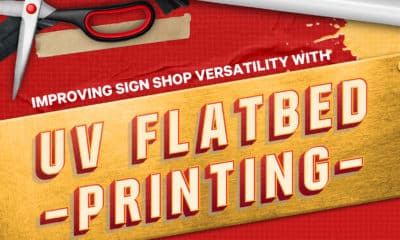T HE GLOBAL MARKET for UV printing continues to expand and, as it grows, printer manufacturers are responding with innovative and versatile solutions for PSPs. Advances in printer technology along with expanded and improved inksets, accessories, and updated RIP software have made the latest UV printers more accurate, productive, and flexible than ever before. In addition to allowing users to print on just about anything, these printers can now produce vibrant, high-quality output that rivals output from other production devices and is sure to please even your most demanding customers.
Let’s take a closer look at the latest UV printing technology and how its components combine to address today’s market trends and customer needs.
Production Versatility
With its ability to print on a wide variety of substrates and 3D objects, UV printing offers exceptional media and application versatility. Users can personalize and customize materials and objects in a range of sizes, allowing PSPs to upsell existing customers and appeal to new ones. UV printing capability also opens opportunities to enter new markets, including packaging, promotional products, point-of-purchase displays, art, and interior design.
In addition, UV printing provides users with a simple and straightforward production cycle. Since UV inks can print directly to the end substrate, users avoid the need to print, then laminate, and then mount their graphics, saving time and streamlining workflows.

UV printing capability allows PSPs to easily produce wall décor and other high-margin products.
Inkset Options
Along with versatility and simplified production workflow, today’s inksets offer a widened color gamut. Some include CMYK plus orange and red inks. These advanced inksets yield high-quality output that rivals the output from eco-solvent printers and allows easy cross-platform production.
Inksets are also being created to respond to different production needs. For example, Roland DG’s EUV5 inks are GREENGUARD Gold certified and print well on both flexible and rigid substrates, while its V-BOND inks are excellent, durable all-around inks. The composition is designed for rigid substrates and direct-to-object printing on items like children’s products and water bottles. Users can transition from one inkset to the other as their production needs change over time.
Another innovation in UV inksets is the number of configuration options now available. Roland DG’s VersaOBJECT CO and CO-i series, for example, offer users as many as seven different ink configurations to meet printers’ specific needs.
Advertisement
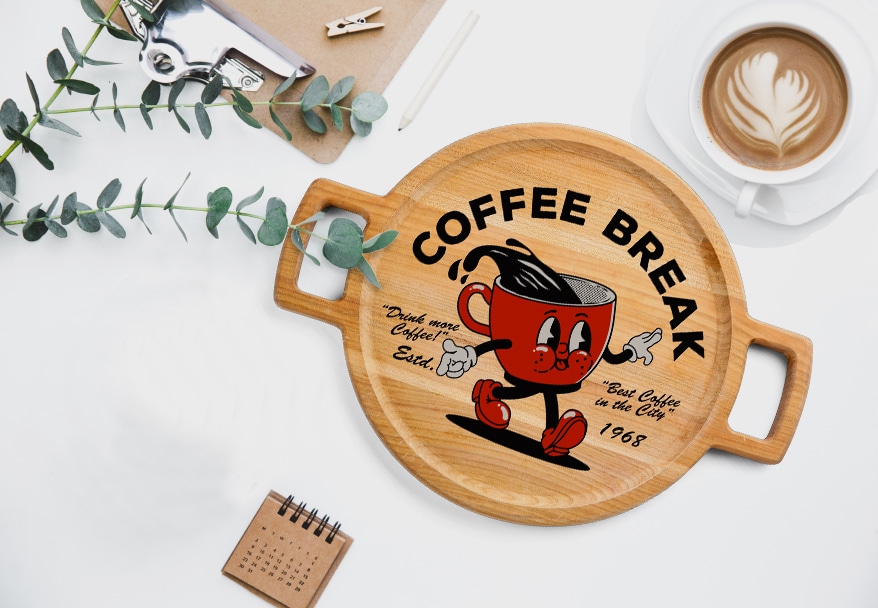
Adding value to everyday objects can open markets for PSPs.
On-Trend Capability
Customization and personalization are trends that only are increasing as businesses seize the potential that these services provide for additional profit and connection to their clients. UV printing helps PSPs meet these needs with quick-drying, durable, and scratch-resistant short-run prints.
Another advantage of UV printing is its white and gloss ink capabilities. Adding contrast with a base layer of white ink or effects with gloss ink enhances the look of the end product. In addition, users can add spot color and a matte or gloss finish to set their designs apart from the competition. UV prints also can be layered to create a texture that simulates popular embossing or three-dimensional effects.
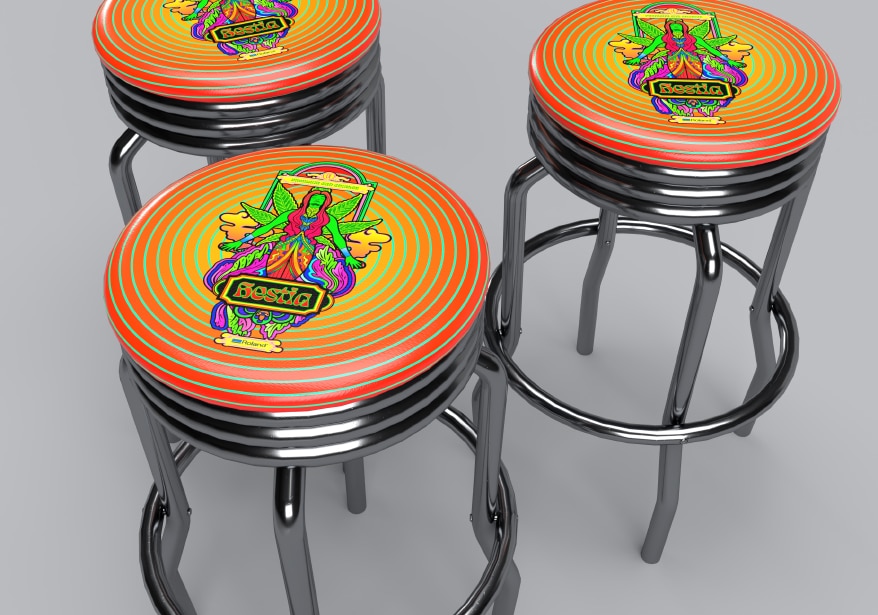
Today’s wider UV ink color gamuts enable accurate, vibrant UV printing on a wide range of substrates.
Hybrid Flexibility
Hybrid UV printers offer the ability to print on rigid material such as board stock and metals, as well as printing roll-to-roll media for graphics and backlit displays. Hybrid UV printers also are being used for printing on heavier textile roll-to-roll media that are used to create products like umbrellas and awnings.
In addition to offering more versatility for customers, hybrid printers have a reduced footprint compared with traditional flatbed printers. During the past few years, printer manufacturers have begun offering a range of bed sizes to accommodate the needs of users, from deeper and larger beds to more compact options.
Advertisement
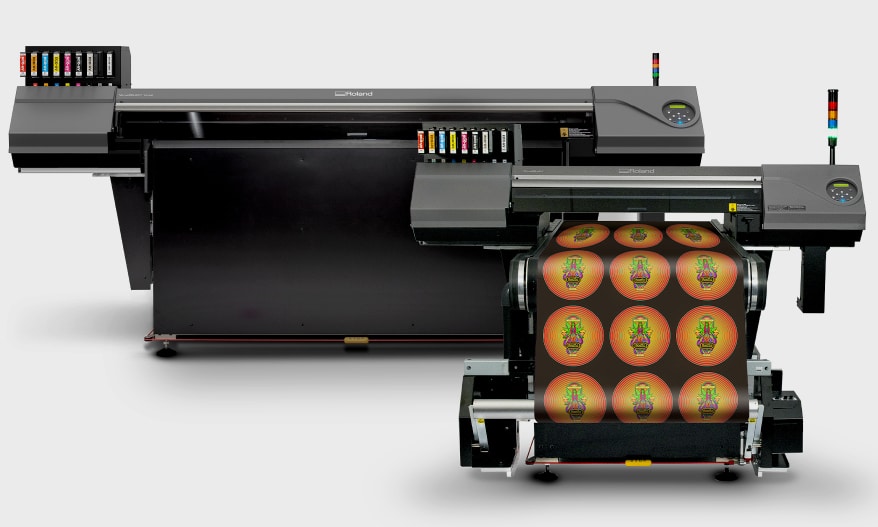
Roland DG’s VersaOBJECT CO series UV flatbed and hybrid printers are available in a range of sizes and configurations and offer direct-to-object or substrate printing.
Increased Depth Allowances
Along with other production enhancements, the newest UV printers can accommodate objects of greater thickness, thus increasing the range of products that can be printed on. Many flatbed or hybrid UV printers can print on objects up to seven inches thick or more.
Printing on curved or uneven materials can be challenging due to the materials’ varying distance from the printheads. However, newer printers like the VersaOJBECT CO-i series offer a Distance Mode that allows detailed prints on these types of materials without any loss in quality.
RIP Solutions
The evolution of RIP software has kept pace with ink and printer technology advances. The newest RIP programs come with a wide range of features and modes that will help users produce more accurate output, more rapidly.
While color management used to be an important concern in digital printing, recent RIP software provides profiles and modes that manage color extremely well. Users can still create their own color profiles, but typically find that they no longer need to do so. Today’s printer software can also measure the color in a paint chip or swatch and reproduce that color with remarkable accuracy.
One feature that helps users create special effects is the ability to control UV lamp intensities on the CO-i. This control can be used for special effects that include a foil technique where a user lays down a spot of uncured gloss ink, then adds foil, rubs it in, and cures it, leaving the foil in the print. Although labor intensive, special techniques like these can add value and impact to art or décor projects.
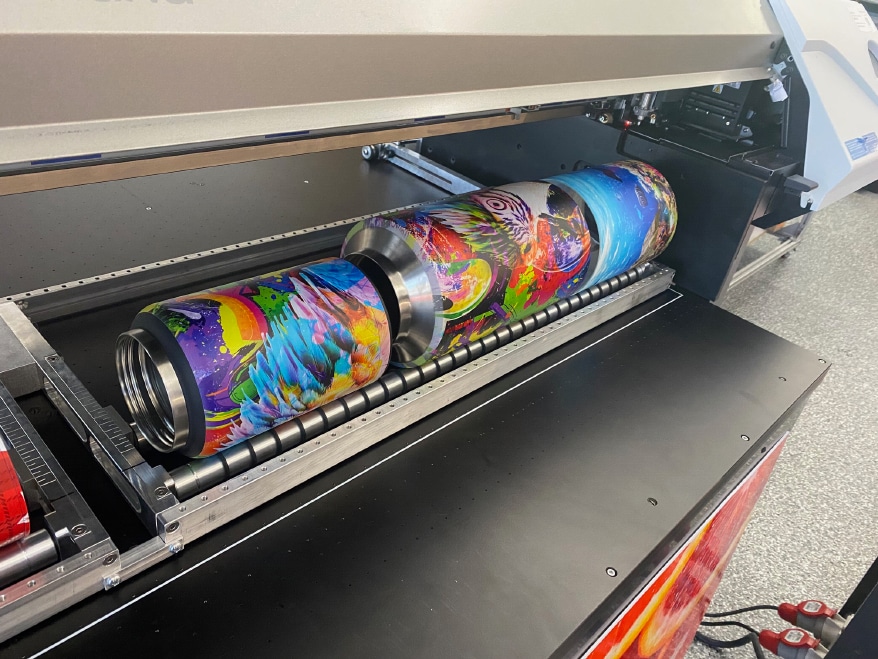
Accessories like Roland DGA’s Rotary Rack help maximize market opportunities for UV printer users.
Accessories That Add Functionality
The increased capability provided by printer accessories offers users the opportunity to broaden their product range to include popular products like water bottles and tumblers.
Using a Rotary Rack, users can print on the entire circumference of cylindrical objects such as insulated water bottles, glass vases and candles, and other objects ranging from .5 inch to 7.75 inches in diameter. This additional printing capability with no quality loss is a winning combination for PSPs and their clients.
Promising Future
In the next few years, we are looking forward to announcements about new UV printer platforms offering increased speed and production capabilities Manufacturers are listening and responding to the market’s demand for additional speed and for continued advances in vibrant, accurate production.
Advertisement
 One advantage of modern UV printers is the increased depth range. The newest printers can handle objects up to 10 inches thick.
One advantage of modern UV printers is the increased depth range. The newest printers can handle objects up to 10 inches thick.

 VEHICLE WRAPS + GRAPHICS3 weeks ago
VEHICLE WRAPS + GRAPHICS3 weeks ago
 Press Releases3 weeks ago
Press Releases3 weeks ago
 Case Studies3 weeks ago
Case Studies3 weeks ago
 Case Studies1 week ago
Case Studies1 week ago
 Benchmarks3 weeks ago
Benchmarks3 weeks ago
 Press Releases2 months ago
Press Releases2 months ago
 Press Releases3 weeks ago
Press Releases3 weeks ago
 Press Releases2 months ago
Press Releases2 months ago







